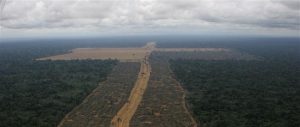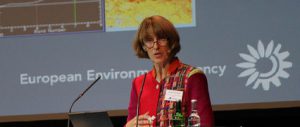One question people with inquisitive minds have sometimes asked through the ages is: how can we learn to see the movement of things that move incredibly slowly, like stars or glaciers? One answer is to use time-lapse photography, with multiple images taken over an extended time period and then stitched together into a much shorter film. That’s how we can now see plants growing on our TV or computer screens, their shoots exploring and stretching as if they were octopi extending their tentacles.
Or, if you’re lucky enough to live for a long time, you may begin to spot the underlying patterns in the wider world – and the way things so often go in circles or, over time, in spirals.
The world of computing and information technology often seems to move at nearly the speed of light, so bewilderingly fast that some part of us wants to slam on the brakes, to find ways to slow down the process for long enough to understand what is going on. But there are often bigger trends at work here, too. One that has long interested me is the evolution of IT-based solutions to the challenges of managing our small planet as the size of the human population (and our environmental footprints) explodes.
Some 25 years ago, I did a project on ways in which the computing tools of the time were being used in such applications as interpreting satellite remote-sensing data. I visited pioneering firms in places like California that were using computers to build multi-dimensional maps of land slated for development, or of underground oil reservoirs. I also worked with IBM around the same time, when the company was using the challenges of modelling air-quality problems in places like Mexico City to accelerate the evolution of its big hardware systems. It was exciting research, but before too long IBM had switched its focus to medical imaging as an even more data-intensive area.
But now the wheel is turning again. And it’s fascinating to watch the pace of evolution accelerating, this time in relation to the challenge of monitoring our small planet’s biosphere. A few weeks back, for example, I came across a new US$434 million, 30-year plan to study the ecology of the United States. Called NEON, for the National Ecological Observatory Network, this will involve producing and analysing huge volumes of what is increasingly called Big Data. When I did that work 25 years ago, scientists were talking of the problems of “drinking at the firehose” when it came to analysing the data produced by satellites – and now the volumes of data are set to increase yet further.
By 2016, some 15,000 sensors installed in 60 sites across the US will be collecting more than 500 forms of data linked to ecosystem health. When fully operational, NEON will generate about 200 terabytes of information a year, which the business magazine The Economist notes is as much as the Hubble telescope – a massively powerful piece of scientific equipment – churned out in its first two decades orbiting Earth.
NEON is designed to allow the scientific community to bridge major gaps in the environmental sciences, known as the “Grand Challenges”. These come in two types. First are those forces that are major causes of change in biological systems, including climate change, land-use change and invasive species. And second are those areas that respond to change, including biodiversity, biogeochemistry, ecohydrology and infectious diseases. Clearly, these effects are not mutually exclusive: for example, changes to vegetation structure can affect climate, or emerging diseases can dramatically change ecosystem processes.
The questions scientists want to answer include: how do changes in the intensity, spatial distribution and frequency of storms affect ecosystems? How will storm damage in inland forests impact coastal systems? How does climate change affect mean temperature and drought severity, and what influences are predicted on species interactions, snowmelt dynamics and dust emissions? And how does climate change affect the ability of invasive species to spread?
One key strength of NEON is that the same instruments will take the same measurements in the same way in every place. As The Economist explains, “By gathering data in this standardised way, and doing so in many places and over long periods of time,” the scientists hope “to achieve the statistical power needed to turn ecology from a craft into an industrial-scale enterprise.”
Aerial and satellite imagery will be collected for all key sites. Once it is clear how ecosystems respond to changes in climate and land use, and to the arrival of new species, the NEON team will develop models to forecast the future of particular ecosystems, allowing policymakers to assess the likely consequences of different courses of action.
The vast amounts of information produced will require immense amounts of number crunching. Indeed, The Economist concludes, “it might be argued that what truly distinguishes Big Science from the small stuff – as astronomers and physicists have known for decades and biologists discovered in the aftermath of the Human Genome Project – is not the amount of money involved but the volume of data that needs to be processed.”
NEON is seen as a significant shift, leading ecologists towards the worlds of Big Science and Big Data. The consequences for their science will be profound and somewhat unpredictable, but we can be sure of one thing: when we are able to routinely tap the evidence not just of butterfly nets and microscopes but also of satellites and NEON-like networks around the world, opening up the results to ordinary citizens to play with, as the NEON team plans to do, ecology will have become a truly twenty-first century science.
The next challenges will be to wire not just America but the world, to ask not just questions but the right questions, and to both pay attention to the answers, however difficult they may be, and to act quickly and sensibly on the information.
John Elkington is executive chairman at Volans and non-executive director atSustainAbility. His latest book is The Power of Unreasonable People. He blogs at www.johnelkington.com and tweets at @volansjohn.
Homepage image by University of Maryland Press Releases



